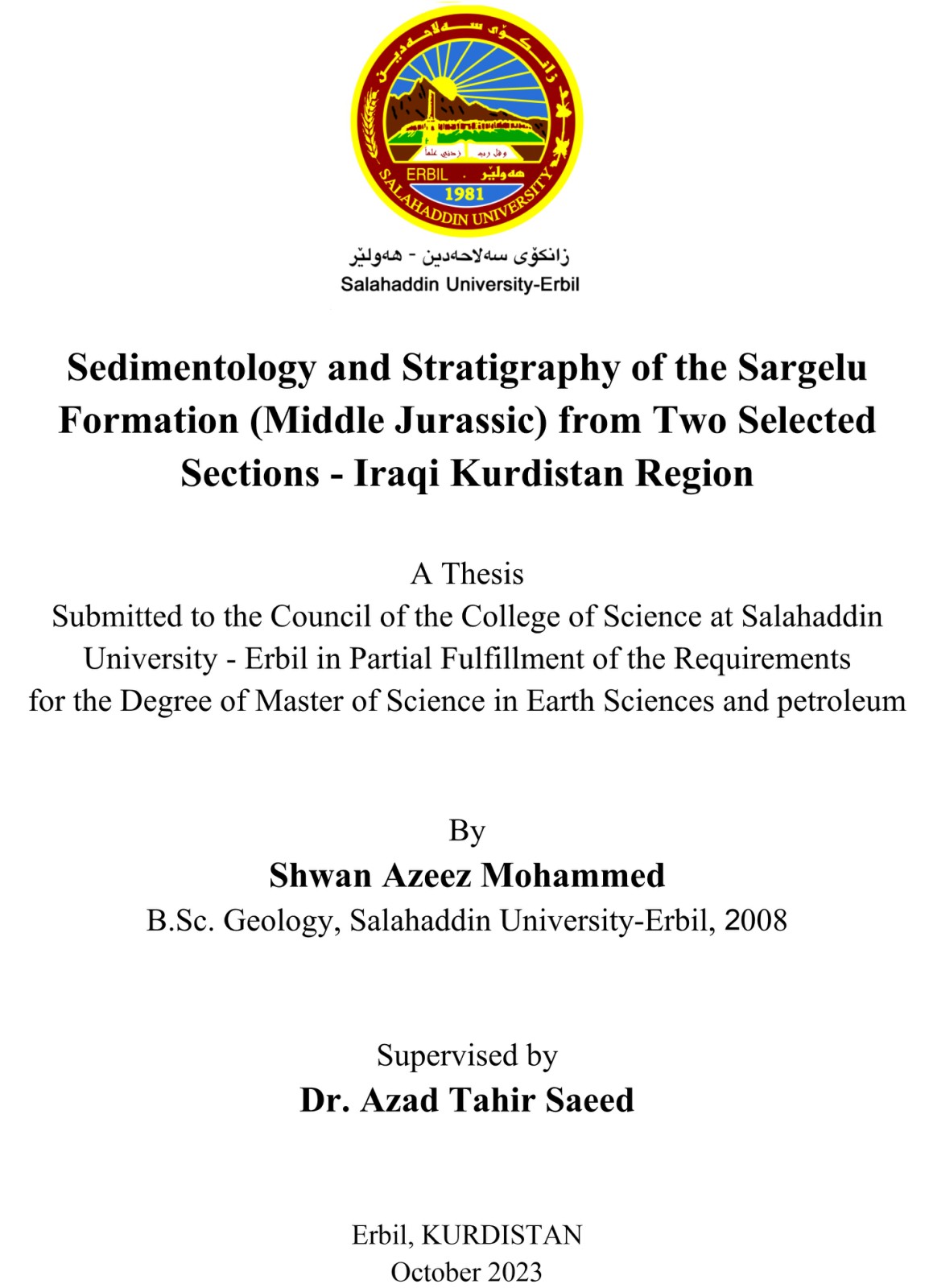
Abstract
Sedimentology and stratigraphy of the Sargelu Formation (Middle Jurassic) period in two sections (Warte and Barzewa) which are located 35 and 12 kilometers east of Soran, respectively, in the Erbil Governorate.
The Sargelu Formation comprises three different types of rock. The lower part is made up of thin to medium-bedded destructive dolomite intercalated with black shale. The middle part consists of medium- to thick-bedded, dark gray, Posidonia-bearing limestone. The upper part is made up of argillaceous limestone beds, radiolarian bedded-chert beds, and black shale beds that are all mixed together. The skeletal grains mostly include pelagic fauna, including both macrofauna and microfauna. Pelagic macrofossils include thin-shelled bivalves (Posidonia), ammonites, and fish remains, and pelagic microfossils comprise radiolaria.
The prominent characteristic of the lower part of the Sargelu Formation of the Middle Jurassic is the occurrence of destructive dolomitization. Find a suitable model for the dolomitization and to propose possible mechanisms that led to dolomitization. The dolomitic unit of the Sargelu Formation extends for hundreds of kilometers constantly. Stratigraphic correlation reveals that the Sargelu Formation is juxtaposed with different successions, such as the Alan and Sehkaniyan formations (Lower Jurrasic), that show evidence of peritidal and sabkha environments, where the dolomitization units were associated with solution collapse breccia and microbial stromatolite. This study proposes the reflux and burial dolomitization models for the lower part of the Sargelu Formation by comparing the paleoenvironmental conditions of the late Lower Jurassic and early Middle Jurassic in the Gotnia basin with a modern analog model.
Based on field observations, petrographic, facies, and textural analyses, it can be said that the Sargelu Formation was deposited in a lower continental slope to deep basin sedimentary condition. It was found that the basin was quiet and pelagic, with shallower periods in between. The slumps at the top part of the Sargelu Formation may be related to the collapse of the partially lithified deposition on the sloping area of the basin.
